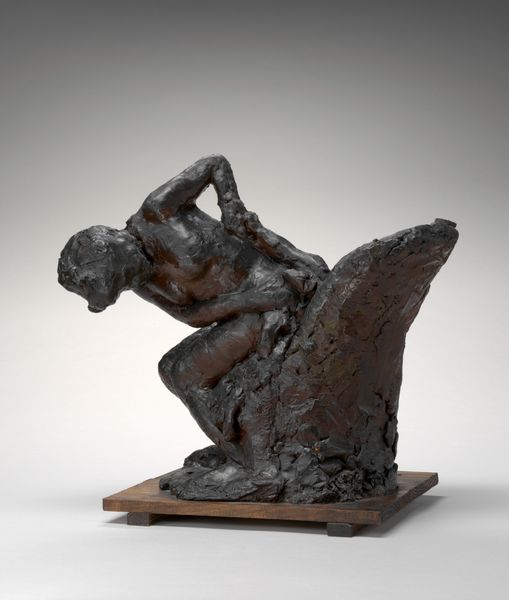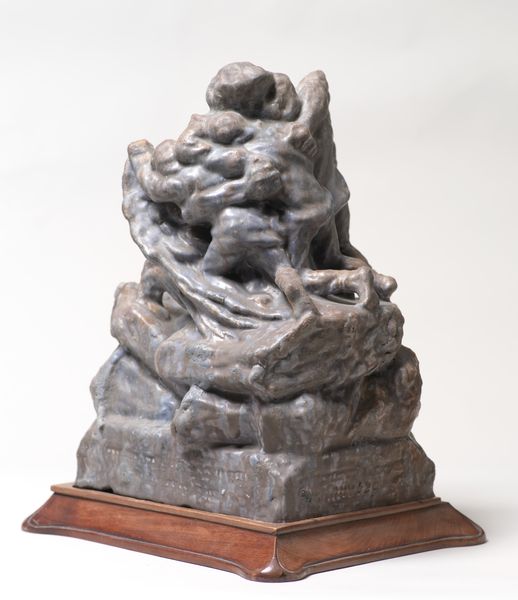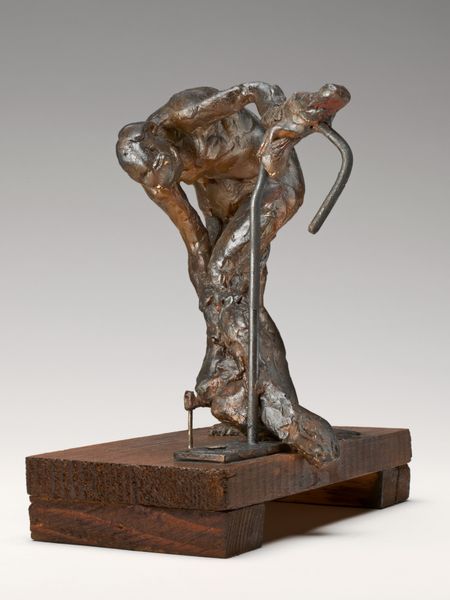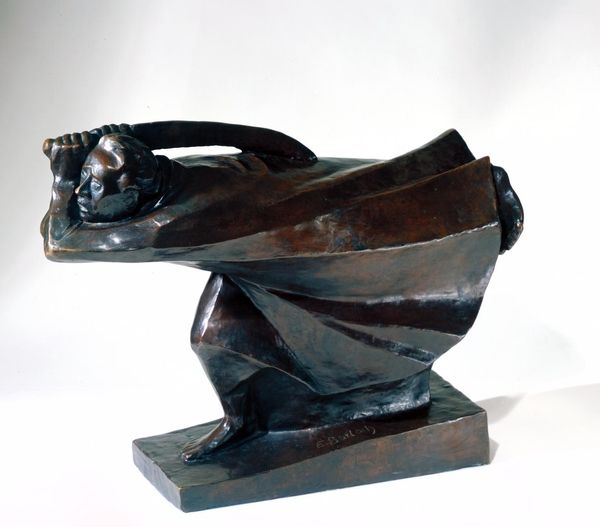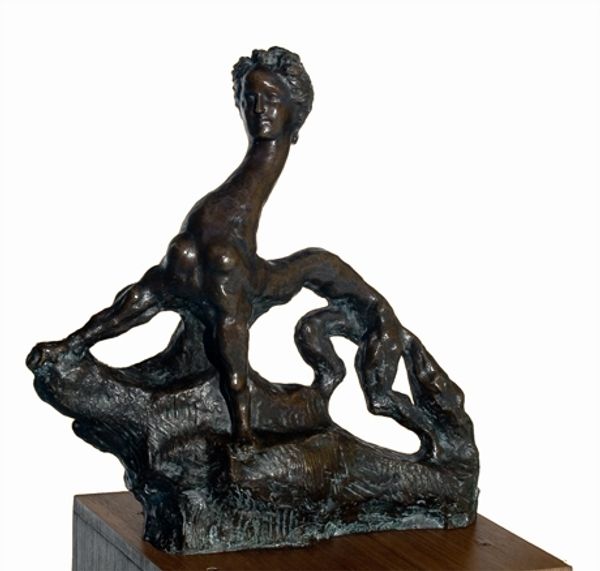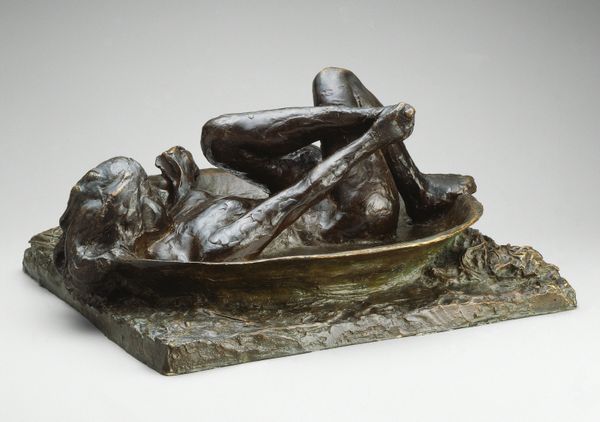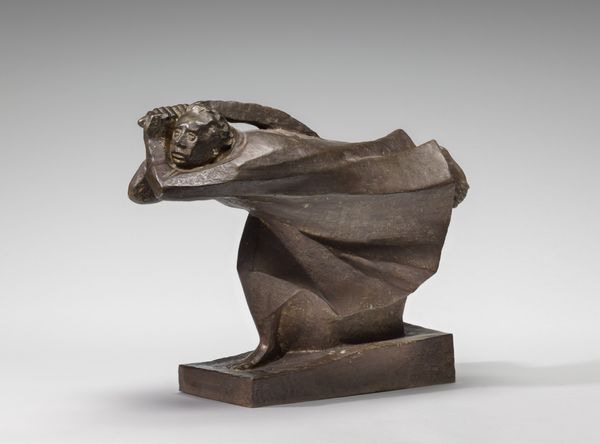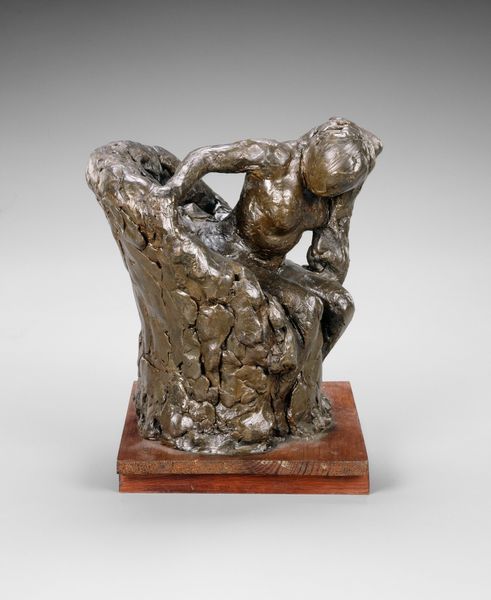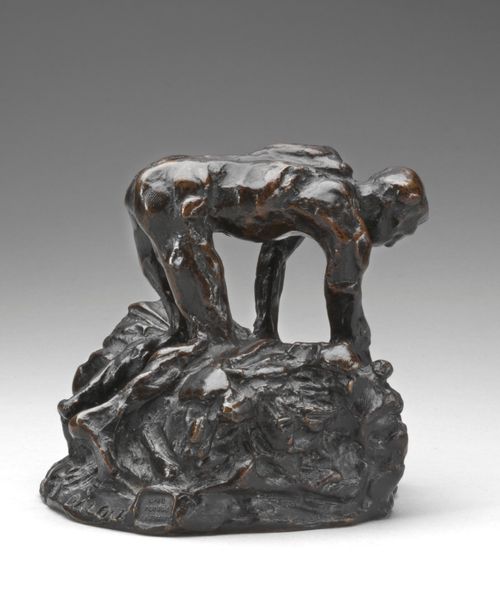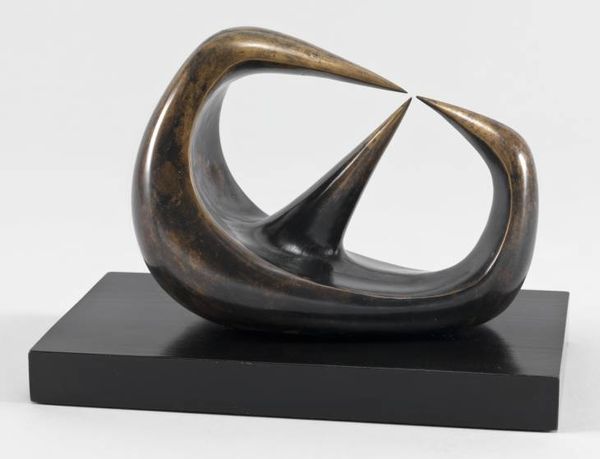
ceramic, impasto, sculpture
#
impressionism
#
sculpture
#
ceramic
#
figuration
#
impasto
#
sculpture
#
ceramic
#
post-impressionism
#
nude
Dimensions: overall without base: 22.5 x 42.3 x 47.2 cm (8 7/8 x 16 5/8 x 18 9/16 in.) height (of figure): 16.9 cm (6 5/8 in.)
Copyright: National Gallery of Art: CC0 1.0
Curator: Good morning. Before us is Edgar Degas's "The Tub," a ceramic sculpture dating back to approximately 1889, showcasing a nude woman bathing. Editor: My first impression is one of intimacy mixed with unease. The texture of the ceramic creates a sense of roughness, which contrasts sharply with the smooth curves of the figure. Curator: That tension between the rough and smooth is compelling. Degas, known for his paintings of dancers and bathers, frequently depicted women in intimate, often unguarded, moments. It's essential to contextualize this within the late 19th-century societal constraints and the evolving gaze within art. How does this representation navigate or challenge those constraints? Editor: The circular shape of the tub itself holds symbolic weight. Circles represent wholeness, enclosure, protection… or even entrapment, depending on the interpretation. Her vulnerability is visually amplified within that containing form. The impasto-like quality evokes a kind of psychological rawness. Curator: Absolutely. Think about the power dynamics inherent in depicting a woman in this state of undress during this period. The rise of Realism and Impressionism also meant an attempt to capture the “truth” of modern life, but whose truth? Considering feminist art histories, how does this "truth" reinforce or subvert patriarchal structures? Editor: There's also the history of the bathing Venus—an established artistic trope—but here, we lack that idealized glamour. The figure is less posed, more…observed. Degas seemingly strips away artifice. But, I wonder if that 'realness' actually adds another layer of symbolic complexity? Curator: Exactly! Is he critiquing or perpetuating the objectification of the female body? These are questions we must consider when examining Degas’ motivations and the cultural context. Furthermore, analyzing the composition and how it mirrors similar power structures evident in journalistic photography and other burgeoning media can be revealing. Editor: I think considering how Degas employs these very potent symbols and the underlying historical context gives a fresh depth to this incredibly tactile and intimate scene. It definitely transcends mere documentation. Curator: Indeed. It forces us to confront our own assumptions about representation, gender, and the artist's role in shaping our perceptions of both.
Comments
No comments
Be the first to comment and join the conversation on the ultimate creative platform.
